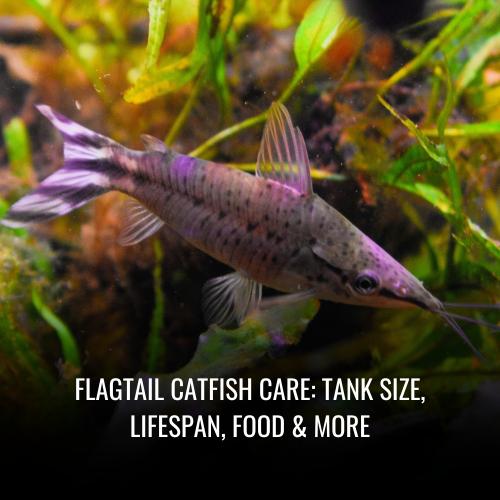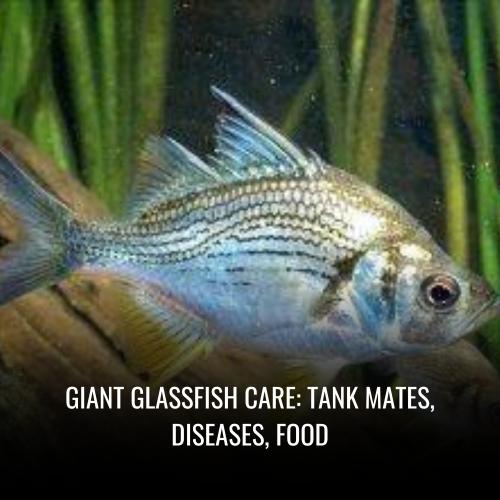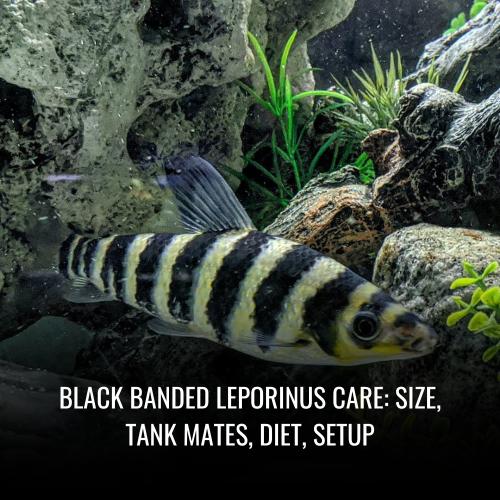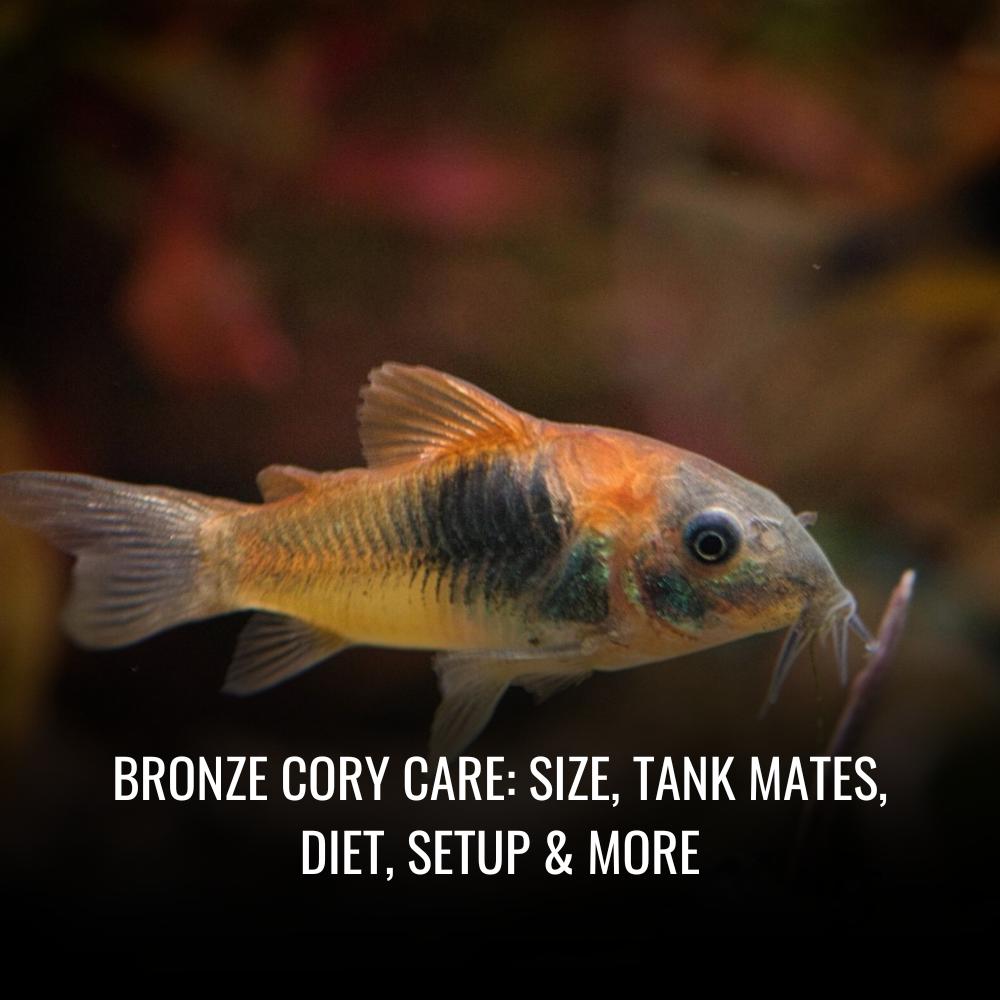Concolor cory Care: Tank Mates, Size, Diet & Setup
This post contains affiliate links. As an Amazon Associate, we earn from qualifying purchases.
The Concolor Cory (Corydoras concolor), an enthralling species of armored catfish, originates from the softwater streams of the Orinoco River system in South America. As part of a vibrant community aquarium, these small, delightful fish primarily dwell at the bottom, sifting through gravel substrates, hence their nickname, the “clean-up crew.” Adult Concolor Corys boast a unique coloration, a sleek blend of dark black with bronze and green tints, and an elongated dorsal fin that adds to their allure. Notably peaceful and relatively hardy, they thrive in schools, thus a community tank with a minimum population of 5-6 is recommended for their social well-being.
Sexual dimorphism is evident in mature fish; females become rounder and larger than males. Concolor Corys are not only a visually appealing choice for aquarists but also a practical one for tanks housing dwarf cichlids or other non-aggressive species.
Concolor Cory Profile Table
| Attribute | Details |
|---|---|
| Scientific Name | Corydoras concolor |
| Common Name | Concolor Cory |
| Family | Callichthyidae |
| Usual Size in Fish Tanks | 2-2.5 inches (5-6.5 cm) |
| Recommended pH Range | 6.0 – 7.2 |
| Recommended Water Hardness | 2-25 dGH |
| Recommended Temperature | 72-79°F (22-26°C) |
| Reproduction | Egg-layer |
| Origin | Venezuela, Colombia |
| Temperament to Own Species | Peaceful, Schooling |
| Temperament Toward Other Fish | Generally Peaceful |
| Usual Place in the Tank | Bottom |
| Lifespan | Up to 5 years |
| Tank Size Requirement | 20 gallons |
| Filtration System | Gentle, e.g., sponge filter |
| Sexual Dimorphism | Yes, females are rounder |
| Substrate Cleaning | Yes, sifts through gravel |
For best care, supplement their diet with quality food like catfish pellets, frozen foods (such as brine shrimp and bloodworms), and occasional live treats like white worms. With proper care, these cool fish make any aquarist’s community tank a happy and thriving environment.
Scientific Name
The scientific name for Concolor Cory fish is Corydoras concolor. This species belongs to the family Callichthyidae and is widely recognized for being one of the many striking armored catfishes originating from South America. The name “concolor” signifies their uniform coloration.
Concolor Cory Scientific Classification:
| Taxonomic Rank | Classification |
|---|---|
| Kingdom | Animalia |
| Phylum | Chordata |
| Class | Actinopterygii |
| Order | Siluriformes |
| Family | Callichthyidae |
| Genus | Corydoras |
| Species | Corydoras concolor |
Average Size
The Corydoras concolor, commonly known as the Concolor Cory, is a charming addition to the community aquarium, primarily because of its manageable size. Adult fish typically reach an average size of about 2 inches, positioning them as a brilliant choice for enthusiasts with limited space. These delicate fish can grow to a mature size of up to 3 inches, allowing them to comfortably reside in smaller aquatic environments.
Recommended Tank Size:
Given their size, the Concolor Cory thrives in tanks that provide ample space for their activities. A minimum population of these cool fish should be housed in at least a 20-gallon tank. This not only accommodates their swimming requirements but also contributes to keeping the fish happy and healthy.
| Tank Criteria | Information for Concolor Corys |
|---|---|
| Adult Size | 2 – 3 inches |
| Minimum Tank Size | 20 gallons |
Their peaceful demeanor and average size render them an ideal candidate for community tanks, where they can coexist with other non-aggressive species such as dwarf cichlids. The tank size and setting should reflect the concolor’s natural habitat, thus providing a comfortable and enriching environment for these exquisite aquatic creatures.
Lifespan
The Slate Cory, more formally known as Corydoras concolor, boasts an impressive lifespan, typically ranging between 15-25 years in a well-maintained aquarium. This trait places them among the longer-lived species within the community tank. It is well documented that females often outlive males, indicating a hint of sexual dimorphism in lifespan among these captivating creatures. Achieving such longevity requires vigilant care, including a diet that reflects their natural preferences and vigilant management of water parameters.
Originating from the Orinoco River basin in South America, the Concolor Cory’s native environment offers vital clues to creating an analogous tank setting. Replicating their habitat not only contributes to their well-being but can also significantly enhance their lifespan. To summarize:
| Key Aspect | Impact on Lifespan |
|---|---|
| Proper Care and Diet | Vital for reaching full lifespan potential |
| Sexing and Compatibility | Influences social stress and wellbeing |
| Tank Environment | Should mimic natural habitat for health |
In essence, maintaining a suitable environment paired with an appropriate feeding regime, and understanding their natural behaviors, will help ensure these armored catfishes live a full and healthy life.
Natural Habitat
Corydoras catfish, including the Concolor Cory, hail from diverse aquatic settings across South America. These environments are exceptionally variable, with conditions often shifting due to weather changes. Interestingly, this lack of constancy has imbued them with the remarkable ability to breathe atmospheric air, engaging in a whimsical surfacing behavior that endears them to aquarists worldwide.
The riverbeds and stream floors that make up their habitat feature a wide variety of substrates. From the soft squish of mud to the grainy texture of sand and even to the hardness of scattered rocks, Corydoras catfish are found in all. While not dependent on fine sand for survival, Corydoras show a particular fondness for it. The sight of these catfish whimsically sifting through fine grains in search of morsels isn’t just enjoyable to watch; it’s a replication of the adaptive foraging behavior that they’ve honed in the wild.
Socially, their environment is notably free from the stress of bullying or hierarchical squabbles. This peaceful existence is a critical aspect of their ability to flourish and an important consideration for replicating their natural habitat in a community tank.
| Habitat Feature | Description |
|---|---|
| Substrate | Mud, sand, rock – Variety is key. |
| Social Structure | No bullying or hierarchy, peaceful living. |
| Oxygen Intake | Surf to breathe air, adding to their charm. |
Appearance
The appearance of Concolor Corys, as with many fish, can be influenced by a plethora of factors–from mood swings to maturity. In the bustling community aquarium, the colors and patterns that adorn these fish are anything but static. As Concolor Corys age, their hue and markings evolve, with sexual dimorphism often leading to significant visual differences between sexes. It is common for juveniles to exhibit less pronounced coloring, which intensifies into the striking patterns of mature fish.
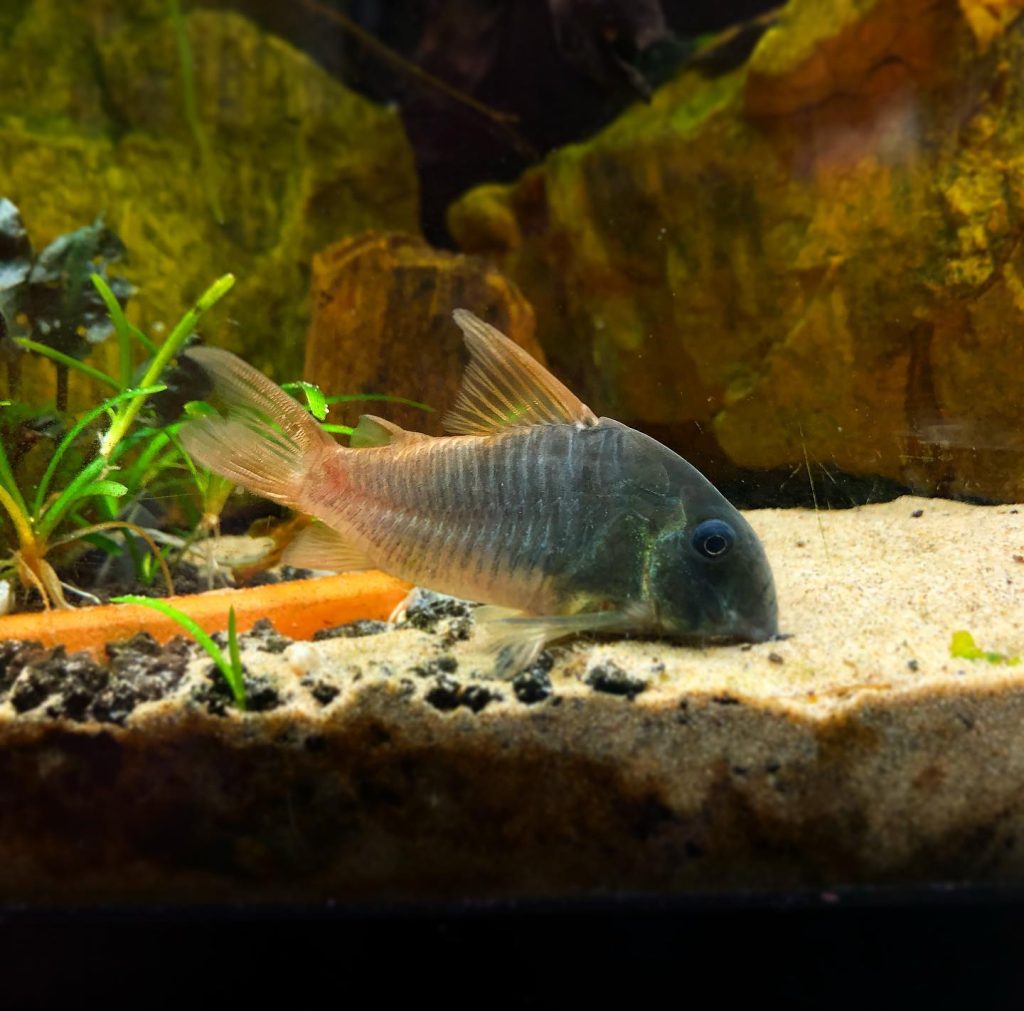
Upon arrival, after their journey through the shipping option, these delicate fish may present a faded appearance. It is the unwritten chapter of their travel narrative; the pigment often retreats under the stress of transportation. Rest assured, as they acclimate to their new environment in the community tank, their vibrant, true colors return to delight.
Customers invested in understanding the intricate phylogenetic diversity of their chosen species will benefit from extensive research prior to committing to a minimum population. The exact fish you receive may vary from online images—each one a unique individual. Should the kaleidoscope of possible appearances leave you with lingering queries, the seller’s special reports and fish happy support team are available to clarify via email.
| Factor | Influence on Appearance |
|---|---|
| Mood & Social Status | Color changes and marking variations |
| Age | Juvenile vs Adult coloring differences |
| Gender | Sexual dimorphism in patterns and hues |
| Shipping | Temporary color loss, restoration with time |
For a detailed guide to the expected appearance at different lifecycle stages, and to address specific concerns, please refer to our dedicated fish medications and care resources.
Behavior & Temperament
Concolor Corys, scientifically known as Corydoras concolor, are renowned for their placid and social nature. These fish embody a serene presence within the community aquarium, coexisting without conflict and participating in the aquatic tapestry with a harmonious grace. Their non-aggressive tendencies dovetail perfectly with other peaceful species, contributing to a tranquil environment ideal for a wide range of tank mates.
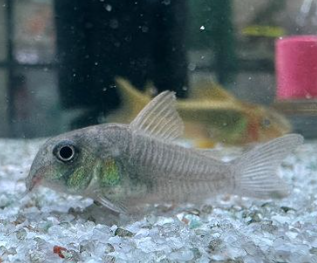
Are Concolor Cory Fin Nippers?
The Concolor Cory is not prone to fin-nipping behavior, making it a trustworthy companion in a shared tank. This trait allows for a diverse selection of fish species within the same habitat, ensuring fins remain intact and relations amiable among aquatic neighbors.
Are Concolor Cory Aggressive To Each Other & Other Fish?
These Corydoras display congeniality not only towards their tank mates but also amongst themselves. Concolor Corys are devoid of territorial aggression, radiating a convivial atmosphere in the aquarium. Their peaceful demeanor is consistent both during the day and in nocturnal hours, when they display increased activity.
Are Concolor Cory Friendly To Each Other & Other Fish?
The Concolor Cory exudes friendliness, preferring the companionship of their conspecifics and manifesting a cordial attitude towards other inhabitants of the tank. Their gregarious nature shines in a collective, where they engage in synchronized activities, favorably interacting with other fish without any evidence of discord.
Are Concolor Cory Schooling Fish?
Absolutely, schooling is a characteristic behavior of the Concolor Cory; these fish revel in the safety and social structure that a group provides. Observing them move in unison delivers a captivating and dynamic element to the tank’s environment. Group living enhances their confidence, leading to more visible and engaging behaviors.
Can You Have Just One Concolor Cory In The Tank?
It is strongly discouraged to keep just a solitary Concolor Cory. These fish are naturally inclined to thrive in groups, and isolation can induce stress. For the most fulfilling life, it is advised to house them in schools of at least six, allowing them to express their social instincts and maintain optimal health.
Do Concolor Cory Need To Be In Groups?
Given their intrinsic schooling nature, Concolor Corys require the company of their own kind to showcase the fullest extent of their behaviors. Groups provide not only social enrichment but also a sense of security that is vital for their overall well-being. A solitary existence for these community-oriented fish is contrary to their needs and can result in diminished vibrancy both in color and behavior.
Food & Diet
Concolor corys, or Corydoras concolor, are distinctive members of the community tank that are recognized not only for their peaceful nature but also for their omnivorous diet. These fish hail from the softwater streams of South America, and in the home aquarium, they display a wide range of feeding behaviors that complement their peaceful existence.
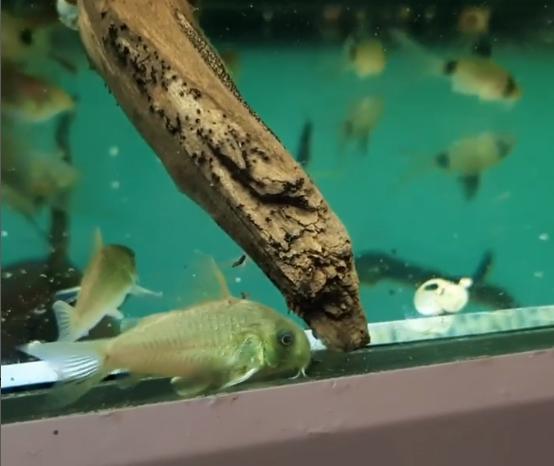
Do Concolor cory Eat Algae?
Although Concolor corys will graze on algae as part of their varied diet, they should not be considered a primary solution for algae control in your aquarium. It’s essential to offer them a balanced diet that includes high-quality sinking pellets, algae wafers, and occasional vegetable-based foods to ensure they receive all necessary nutrients for optimal health.
Do Concolor cory Eat Shrimp?
Corydoras concolor are generally shrimp-friendly and do not typically prey on them. They coexist well with shrimp in a community aquarium setting, exhibiting a bottom-feeding nature that complements the presence of shrimp rather than threatening it.
Do Concolor cory Eat Bloodworms?
Bloodworms are a welcomed inclusion in the Concolor cory diet. These omnivorous catfish appreciate the addition of small live and frozen foods, such as bloodworms, to their dietary regimen. Feed them bloodworms in moderation and provide sufficient time for them to consume their food, especially in the evening when they are most active. Small portions given multiple times a day are preferable to prevent overfeeding and potential water pollution.
Do Concolor cory Eat Mosquito Larvae?
Concolor corys will actively feed on mosquito larvae, integrating this natural food source into their diet. Offering them mosquito larvae not only provides them with high nutritional value but also allows these catfish to exhibit their natural foraging behavior, contributing to their overall health and well-being.
Do Concolor cory Eat Planaria?
In their quest to forage, Concolor corys may consume planaria, which they encounter while scavenging through the substrate with their sensitive barbels. Such small invertebrates can be a part of their diet, but it’s essential to continue providing a diverse range of foods to fulfill all their nutritional needs.
Do Concolor cory Eat Plants?
Corydoras concolor are not known to consume plants, staying true to their omnivorous nature which requires a diet consisting of flake foods, small pellets, and the occasional baby brine shrimp. Substrate choice is crucial as well, with sand being the preferred substrate for these catfish to protect their delicate barbels while they search for food. It’s advisable to feed these gentle scavengers small portions on a daily basis to avoid overfeeding and maintain a clean and healthy tank environment.
Sexing: Male vs Female
Determining the sex of Corydoras concolor is straightforward when they are mature and properly conditioned. Observing specific physical attributes can help differentiate males from females:
Male Characteristics:
- Body Length: Males exhibit a shorter profile.
- Pectoral Fins: Males possess elongated pectoral fins.
- Pelvic Fins: The pointed nature of their pelvic fins assists in identification.
Female Characteristics:
- Body Width: Females are wider, especially when viewed from above, due to an expansive underbelly.
- Body Length: They are typically larger in length than their male counterparts.
- Pectoral Fins: The females’ pectoral fins are rounded.
- Pelvic Fins: Rounded pelvic fins of females form a pouch, a distinctive trait used during egg-spawning.
One of the more conspicuous markers is body shape; females have a plumper appearance, particularly when well-fed or ready to breed. This difference is evident from a top view and from the side. In summary, paying close attention to fin shape and body contour can effectively distinguish the sexes in a population of Corydoras concolor.
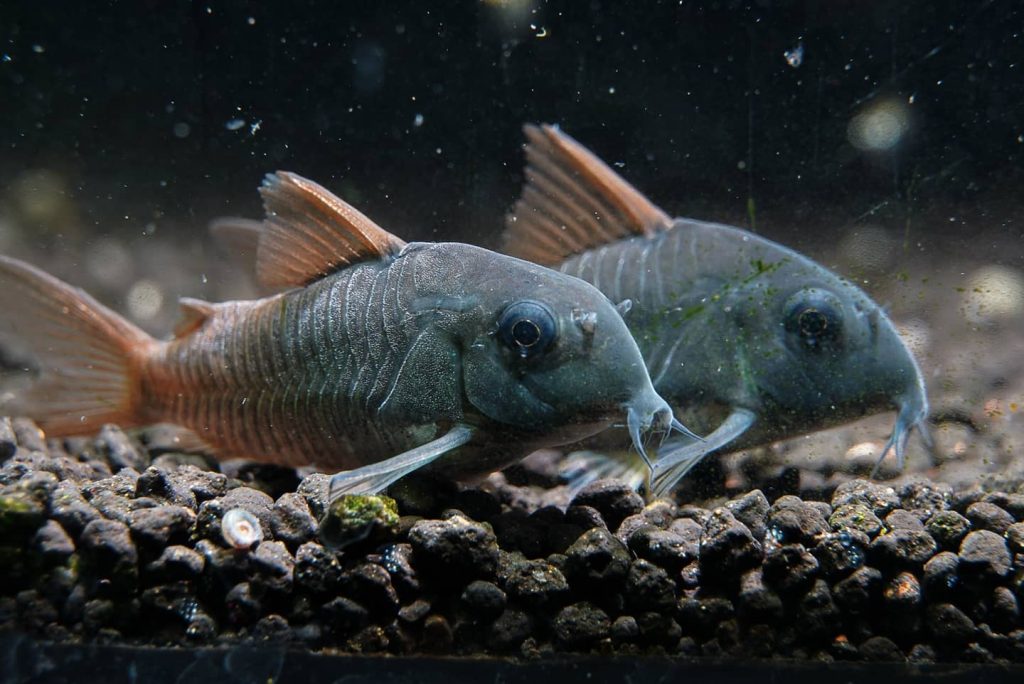
Concolor cory Tank Mates
Concolor corys, known for their tranquility, are ideal occupants for community tanks. Their preference for group living makes them excellent companions for other non-aggressive fish, including tetras and rasboras. These fish thrive in softwater conditions, akin to their native South American streams, which should be considered when creating their habitat.
When it comes to suitable tank mates, consider species that prefer different tank regions. Concolor corys will roam the bottom, so pairing with mid and upper level swimmers creates a dynamic aquarium landscape. While peaceful, they are not pushovers; their more substantial size compared to other Corydoras species allows them to act as dithers, providing comfort for medium-sized cichlids that are not prone to aggression or viewing them as prey.
However, caution is advised: boisterous or fin-nipping neighbors should be avoided to maintain the corys’ well-being. Ensure harmony in the tank by choosing companions that favor similar water parameters and exhibit a peaceful nature.
Compatible Tank Mates for Concolor Corys:
- Tetras
- Rasboras
- Dwarf cichlids
- Non-aggressive medium-sized cichlids
Tank Mates to Avoid:
- Aggressive fish
- Fin-nippers
Provided their requirement for softwater conditions and a peaceful community is met, Concolor corys will be a delightful addition to any compatible aquarium.
Aquarium Setup
Creating the perfect home for Concolor corys—also known as Corydoras concolor—demands careful attention to their natural habitat needs. These South American native fish flourish in a well-prepared aquarium that replicates their natural, softwater stream environments.
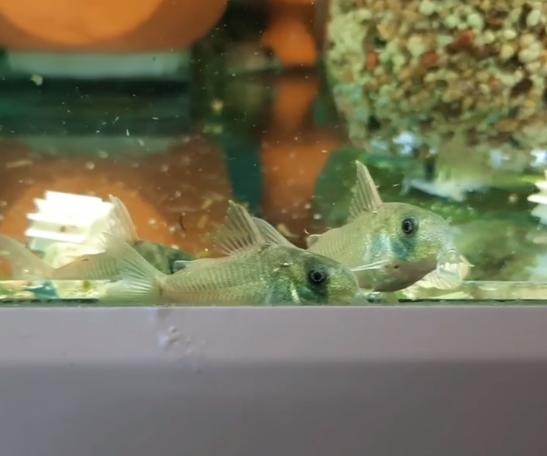
Ideal Tank Size
Concolor corys are active, sociable fish that need ample room to swim and forage. The minimum recommended tank size for these fish is 60 liters (16 gallons), with a length of at least 50 cm (20 inches). This space provides adequate room for a small group, ideally between 4-6 individuals. For enthusiasts wishing to keep a medium-sized group of 7-10 fish, a larger tank would ensure the well-being of the community. An ideal aquarium setup is 60x40x30cm, which allows for a wide range of movement and adequate space for environment enrichment such as twigs, moss, and fine sand substrate.
Ideal Water Parameters
Concolor corys are adaptive but thrive best within specific water parameters that mirror their native conditions. Maintain the temperature between 22-27°C (78-82°F) and pH levels from 6.0-7.5 to match their comfort zone. The total dissolved solids (TDS) should ideally be between 50-350 ppm to replicate the purity of their natural freshwater habitat. Weekly water changes with slightly cooler water can help simulate the natural flow of streams and reduce pollution while making maintenance easier for the aquarist.
Filtration
For keeping Concolor corys healthy and the water pristine, an efficient filtration system is paramount. Sponge filters are highly recommended for these fish, as they provide gentle water flow and biological filtration without the risk of delicate fins getting trapped, as can happen with more powerful units. The sponge filter also aids in cultivating beneficial bacteria, which can be further accelerated by using a bacteria activator like JBL Denitrol, especially during the initial nitrogen cycle period of approximately three weeks.
Lighting
Slate Cory catfish and by extension, Concolor corys, do not present stringent lighting requirements. They adapt well to varying light conditions, from natural daylight to standard aquarium lighting. These fish may show a preference for subdued lighting that echoes the shadowed areas of their natural habitats. When setting up the aquarium, it’s essential to monitor the light intensity and duration to find a balance that allows Concolor corys to feel secure and maintain a natural day-night cycle. Remember to include leafy plants to provide hiding spots and break up the light, creating a serene and attractive environment for your fish.
Common Possible Diseases & Prevention
Aquarium fish are susceptible to several health issues, notably bacterial infections, parasitic infestations, fungal diseases, and viral infections.
Preventing Diseases:
- Maintain Water Quality: Ensure the water parameters are optimal, with regular changes to keep pollutants at bay.
- Balanced Diet: Offer a variety of foods to meet nutritional needs, including catfish pellets, frozen foods like brine shrimp, and occasional treats like white worms for Concolor corys.
- Avoid Overcrowding: Overcrowding can stress fish and spread diseases quickly; always respect the minimum population guideline for your tank size.
Regularly observe your fish to catch any worrisome changes in behavior or appearance early on. Erratic swimming or visible spots, for instance, can indicate health issues. Quarantine new arrivals for a prescribed period before they join your mature fish to protect against contamination. Lastly, any new equipment or decor should be cleaned and sterilized.
By adopting these straightforward measures, you can maintain a vibrant and healthy environment for your treasured aquatic pets.
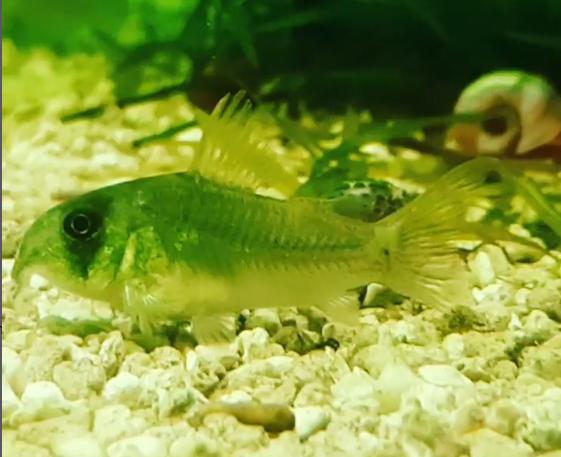
Breeding Concolor cory In Aquarium
The Concolor cory, hailing from the softwater streams of South America, specifically within the Orinoco River basin in Colombia and Venezuela, presents an aesthetically pleasing addition to community aquariums. This species, recognized by its bronzed black coloration and elongated dorsal fin, reaches maturity radiating a unique charm.
Concolor corys are not just visually striking; their peaceful and hardy nature complements their preference for social schooling, rendering them ideal candidates for aquarium breeding. Aquarium enthusiasts worldwide appreciate them for their role as efficient bottom feeders, harmonizing well with medium-sized fish such as dwarf cichlids and adding dynamic interactions at lower tank levels.

For successful breeding of the Concolor cory, an optimized environment is paramount:
- Temperature: 23-26°C
- pH Levels: 6-7
- Hardness: 2-10 dGH
Maintaining these conditions ensures a conducive breeding habitat. Coupled with fine gravel substrates and sponge filters to mimic their natural environment, these measures can significantly increase the likelihood of spawning. Providing a diet that includes catfish pellets, frozen bloodworms, and a mix of other frozen foods will keep the fish happy and healthy, thus enhancing their breeding potential. Regular monitoring and maintaining a minimum population will help reproduce not just the exact fish, but also the vitality of their lineage, preserving the phylogenetic diversity inherent to these cool yet delicate armored catfishes.

